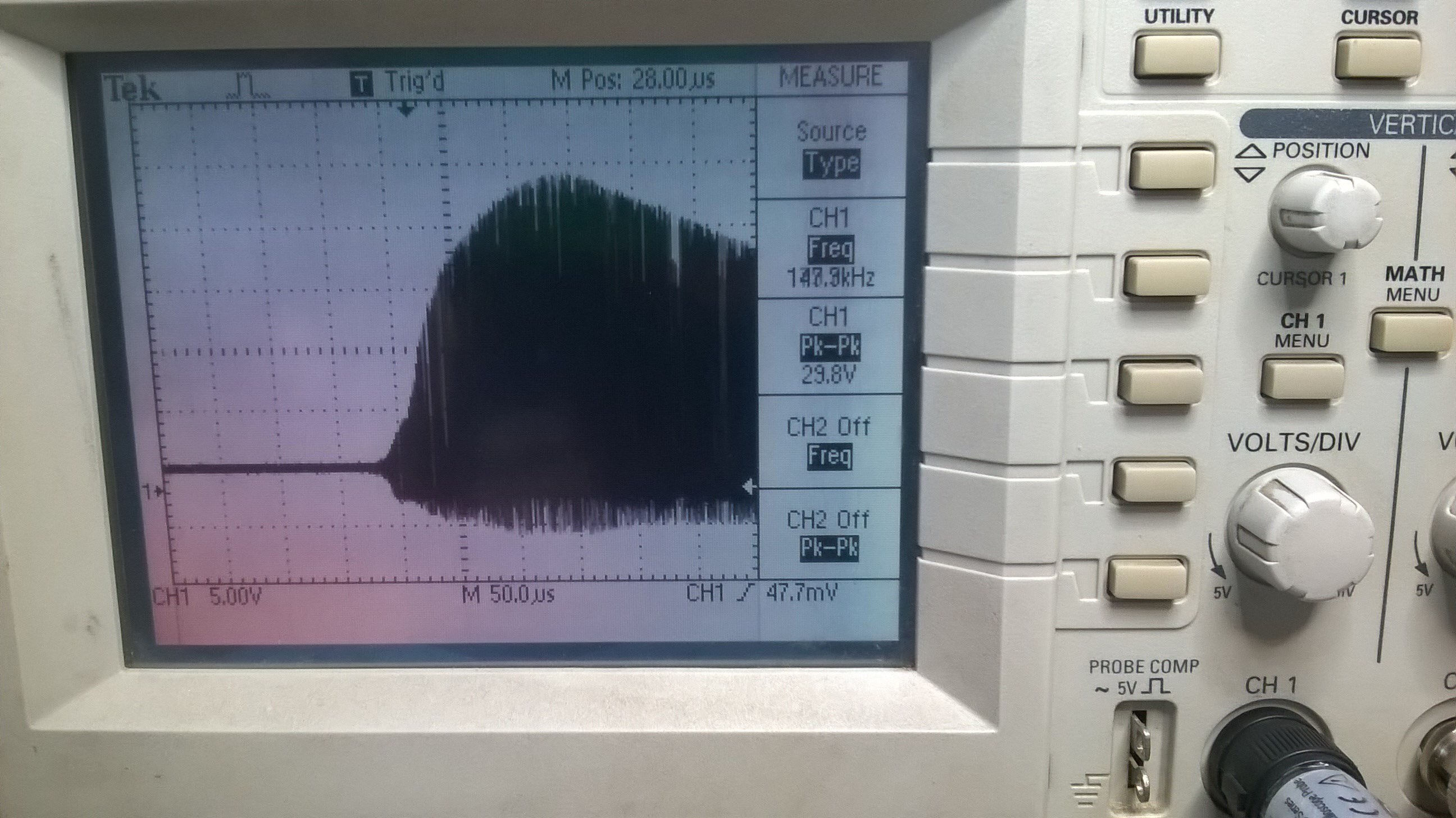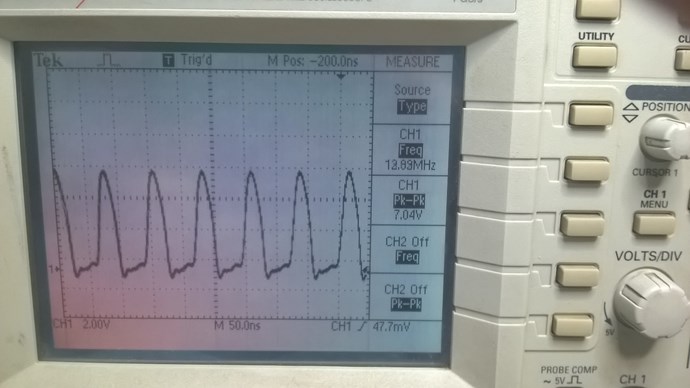Rakarskiy
posted this
24 September 2020
magnetic permeability for cores has two levels, absolute and permeability. The relative permeability indicates how many times the magnetic flux in the core has increased compared to the magnetic permeability of the vacuum. If we have a solenoid with a length of 30 mm (0.03 meters) without a core, with a certain number of turns (100), then when it is closed into an electric circuit with a current of 1 ampere, we get the magnetic field strength, which is calculated by the formula (Н = I * w/ L).
H(Am) = 1 * 100/0.03 = 3333 Am (Ampere per meter) ; To find out the magnetic induction of this field in Tesla, it is enough to use the relation (1Am = 1, 256 х 10 (-6) Т). 3333 Am * 0,000001256 = 0,004186248 T
Usually, unclosed ferrite has a relative permeability of 600: 600 * 0,004186248 = 2,5 T.
Unfortunately, we will not get this value in reality. The reason is in the limiting possibilities for material saturation, for ferrite it is within 0.5 T.

In fact, with this value of the strength of the electromagnetic field, we will heat up our core. There is one more feature that, in our opinion, is not related to field radiation, the value at the end of the core pole will already be in the region of 1/2 of the real saturation. Steel has a maximum saturation field of up to 2T compared to 0.5T ferite. In addition, electrical steel can withstand high values of the strength of the original electromagnetic field. Academic sources indicate that the frequency limit for steel is around 5 kHz. But this requires very thin sheets.
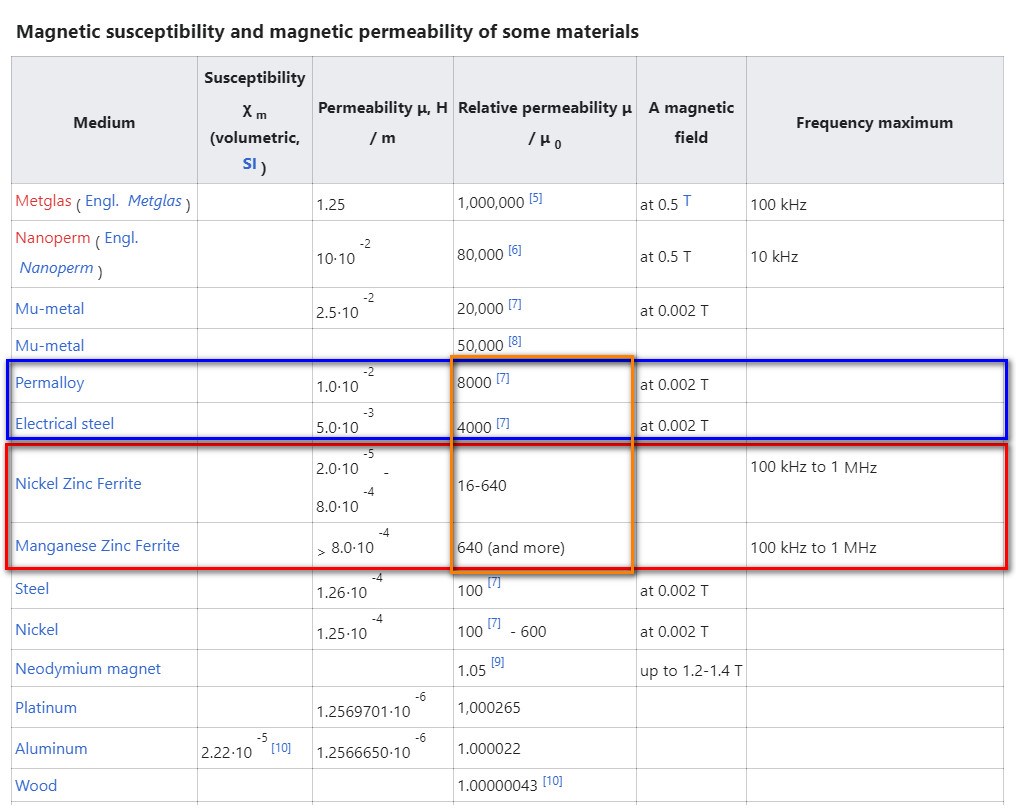
https://translate.google.com.ua/translate?hl=ru&tab=wT&authuser=0&sl=ru&tl=en&u=https%3A%2F%2Fru.wikipedia.org%2Fwiki%2FМагнитная_проницаемость
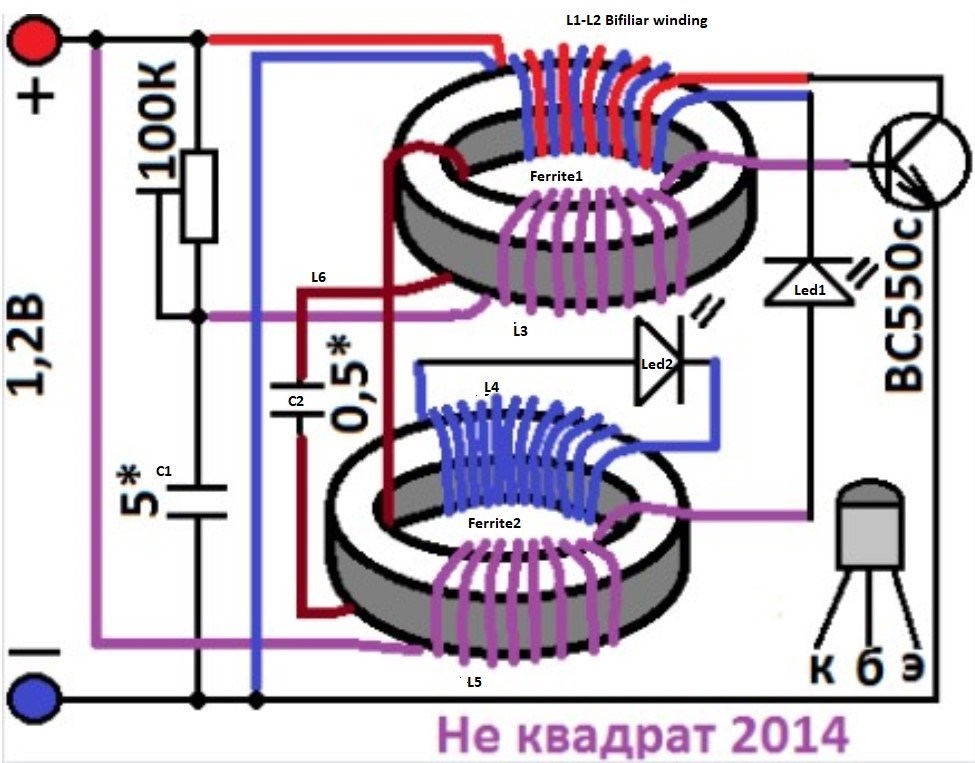
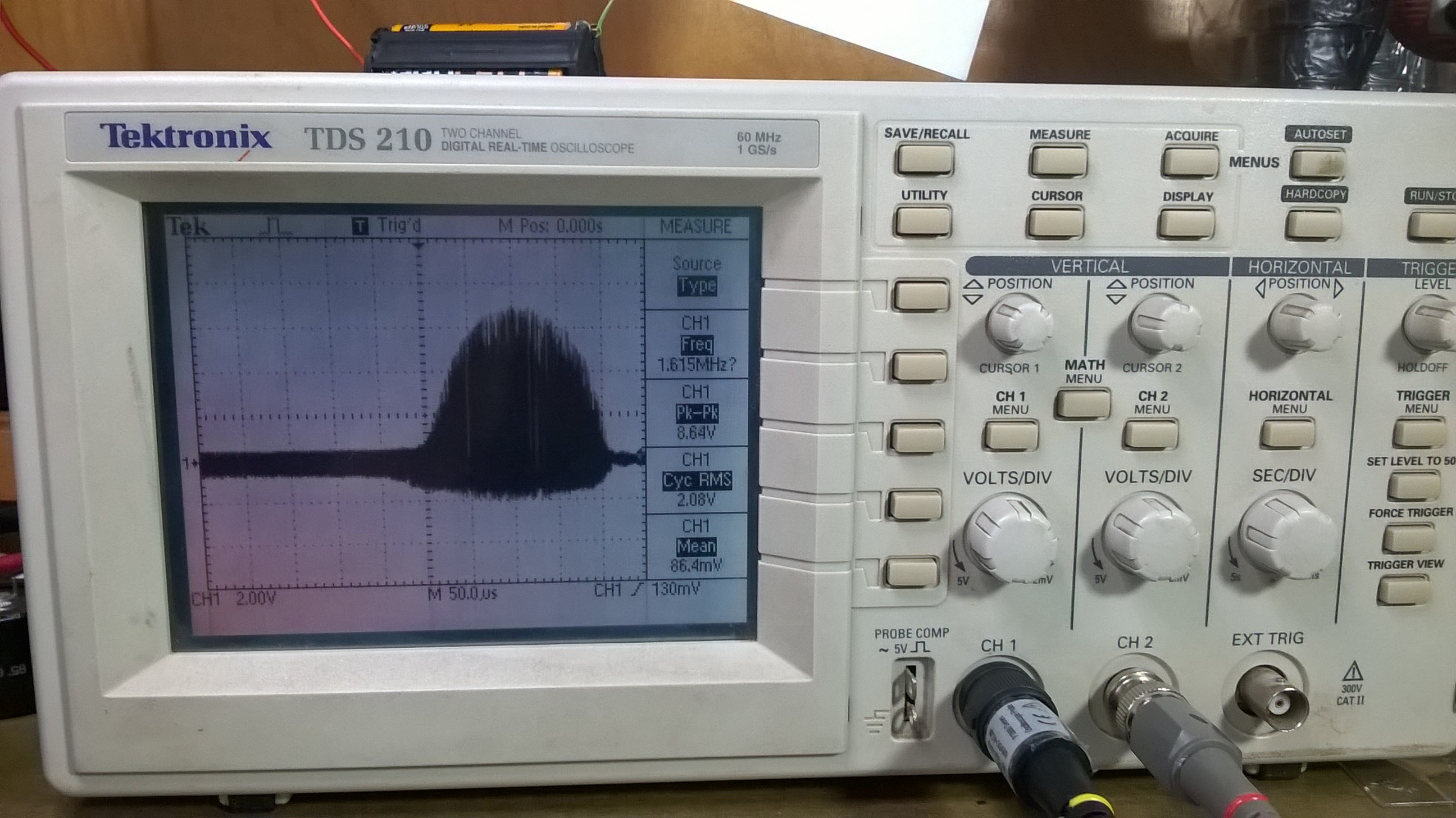
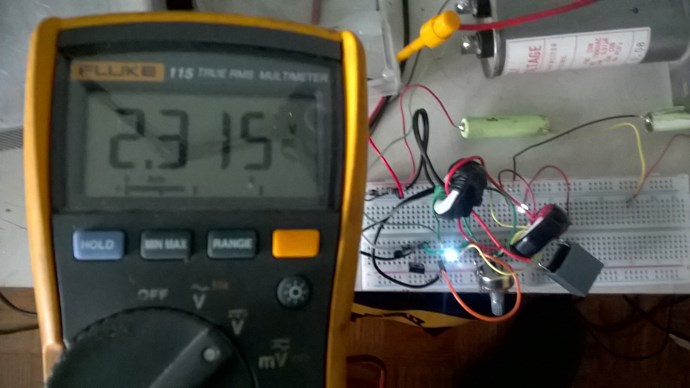





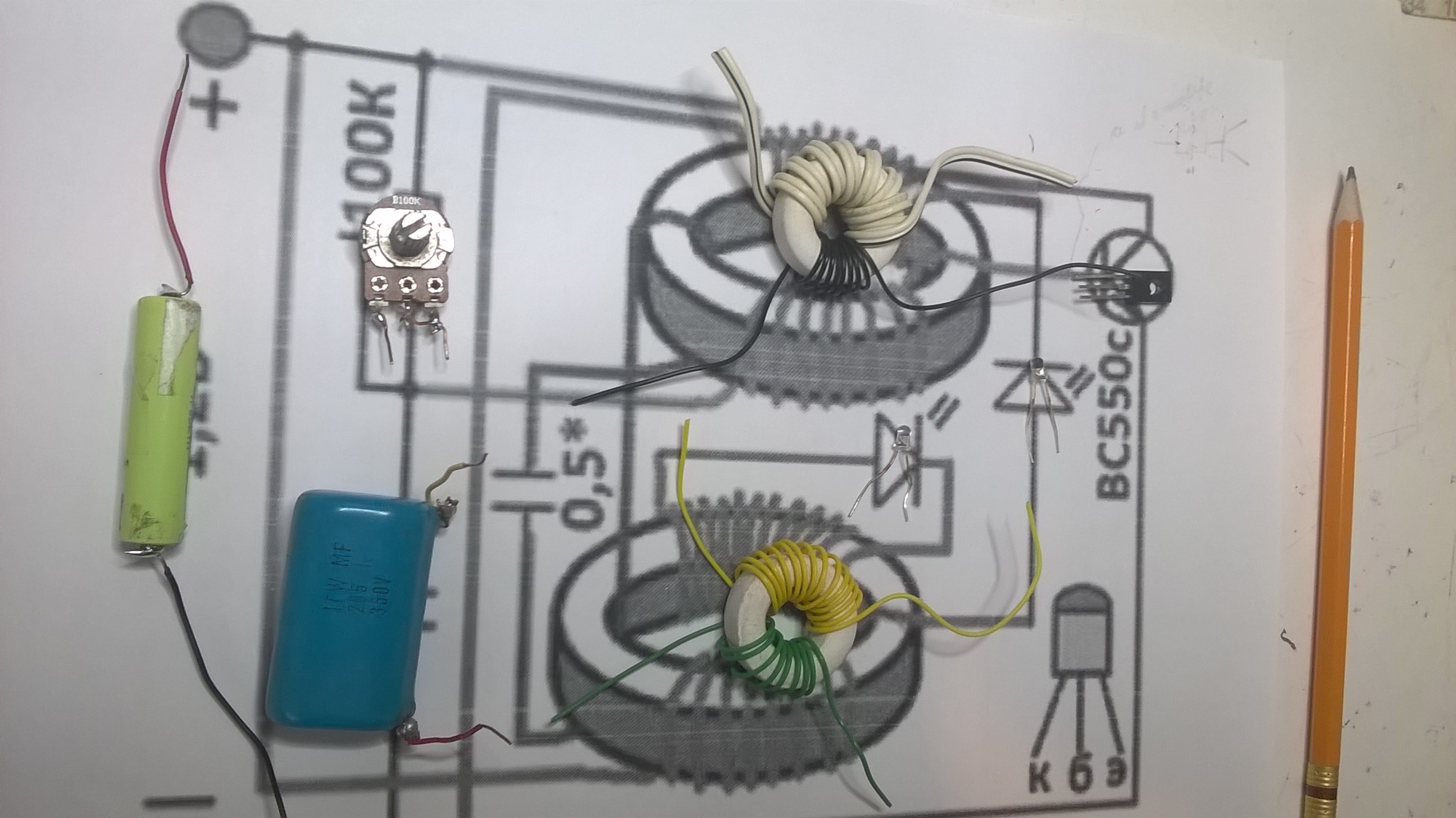

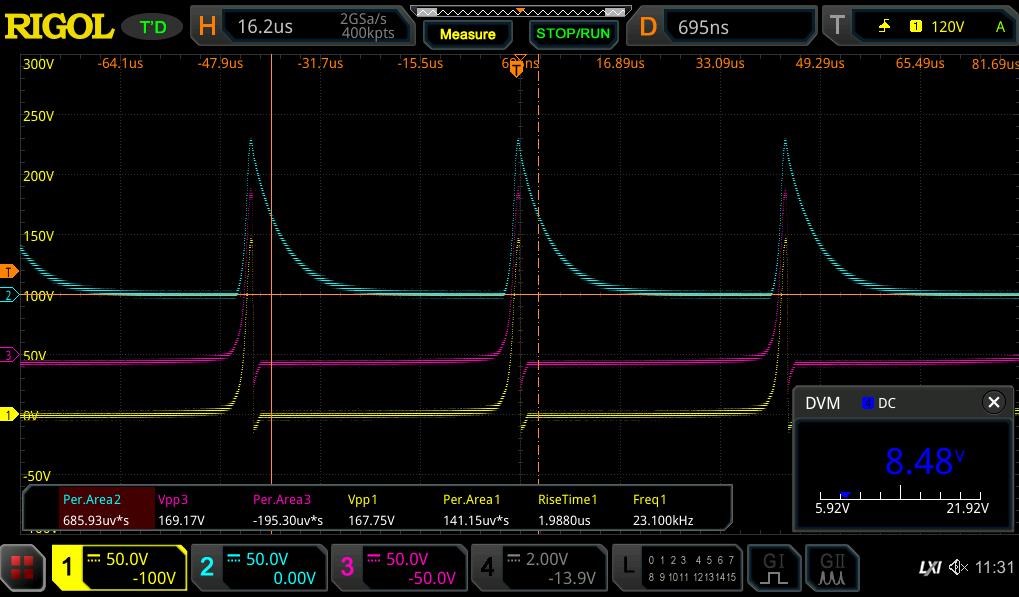

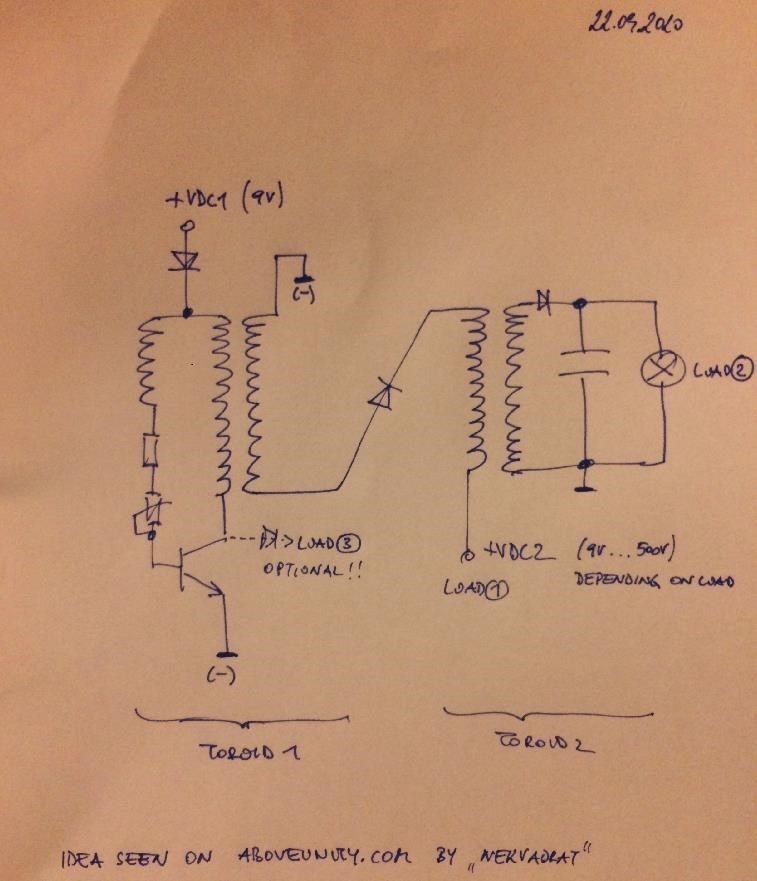




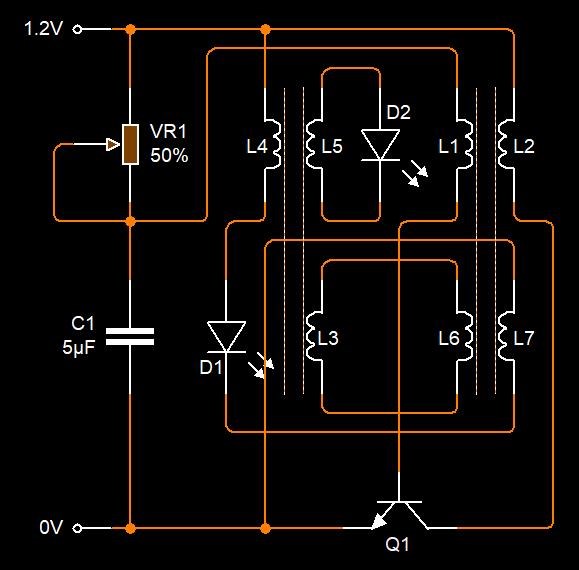

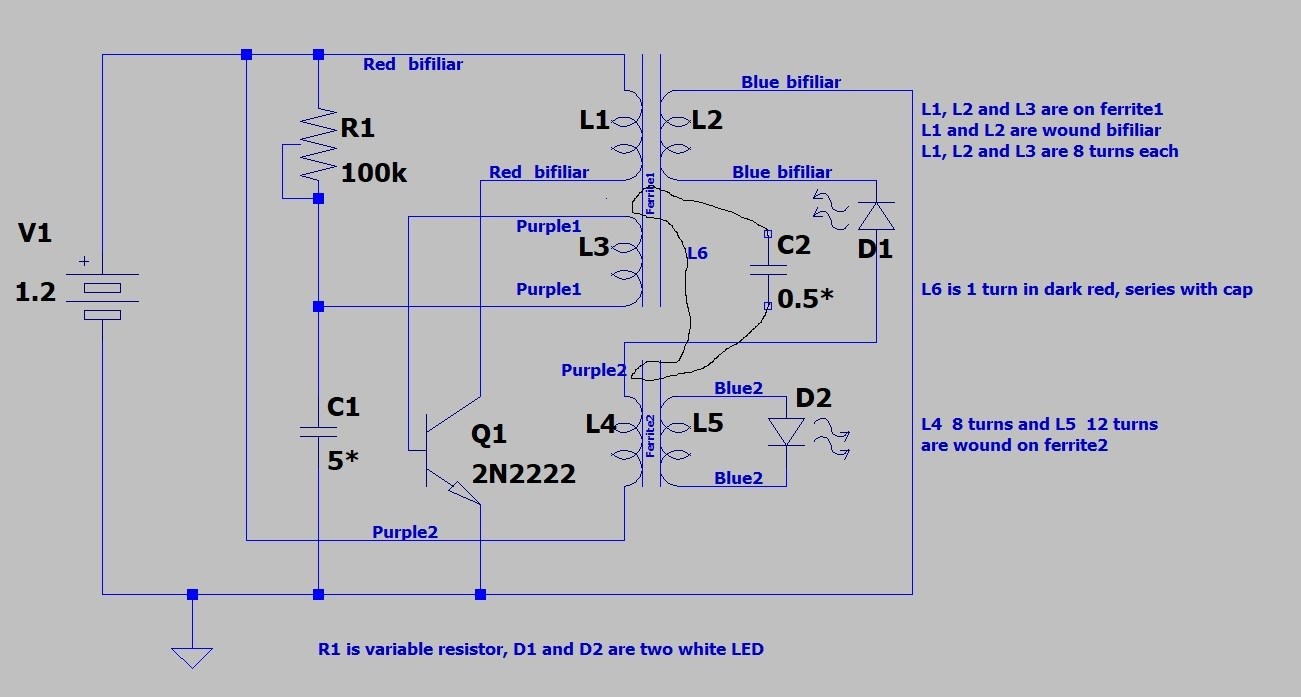



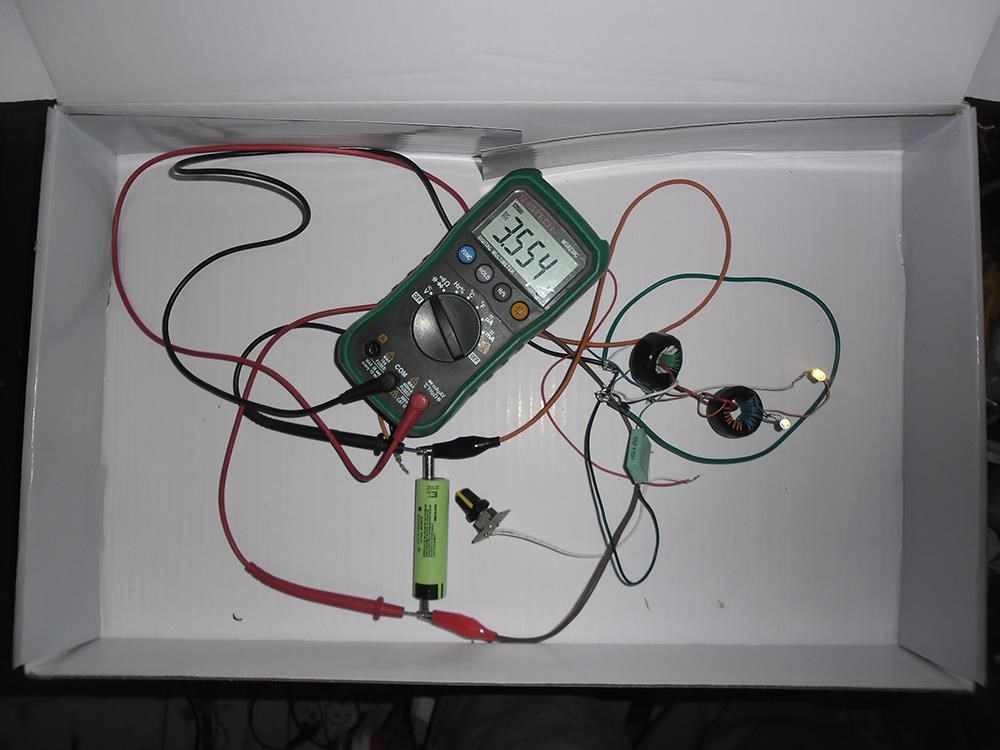
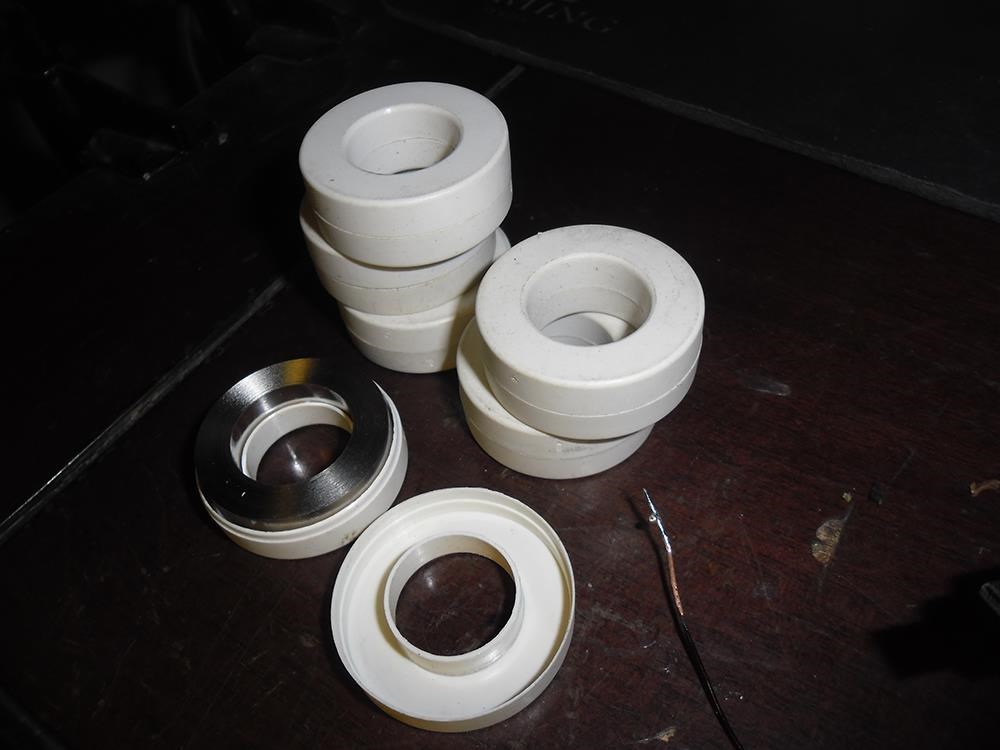
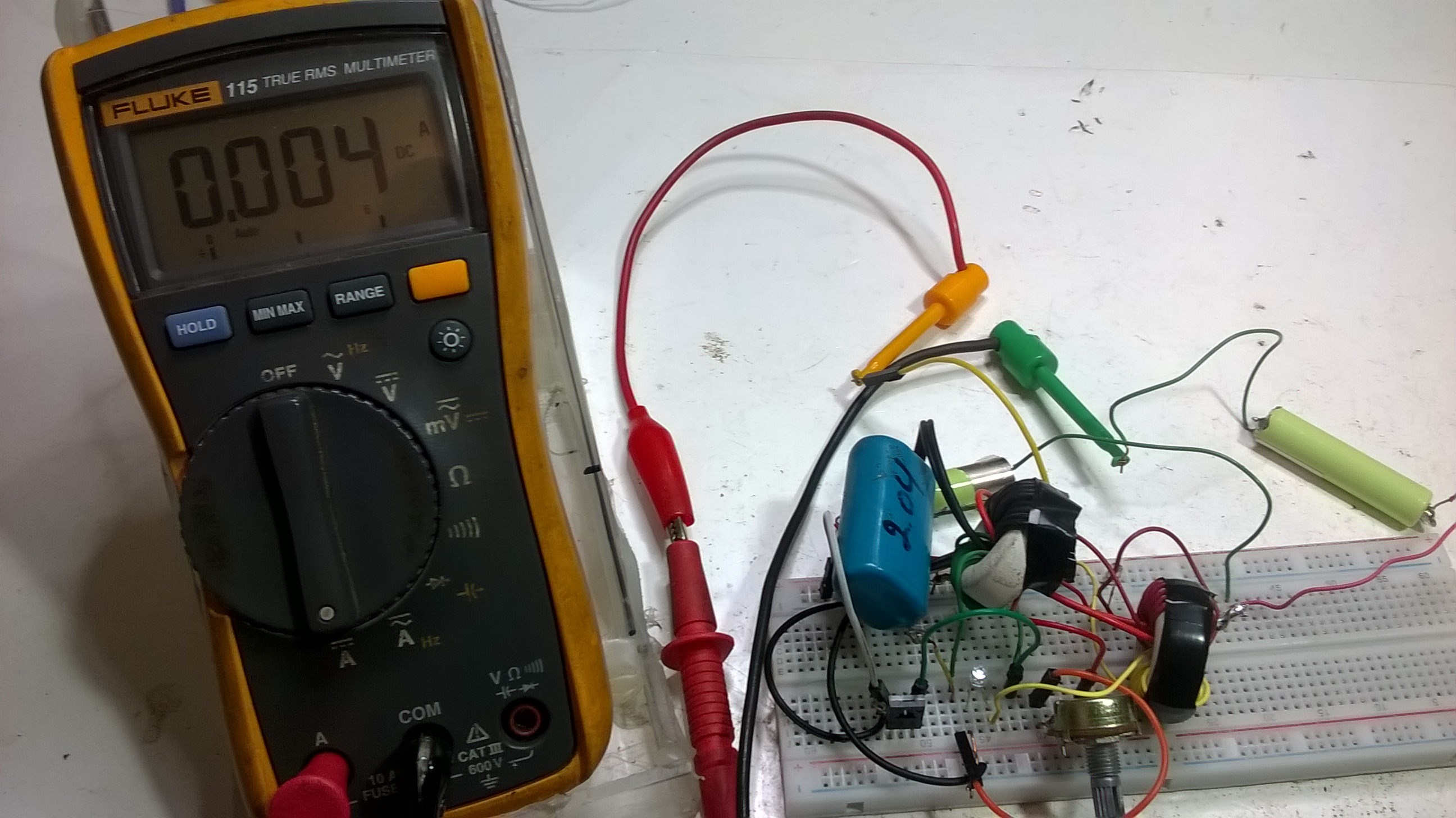
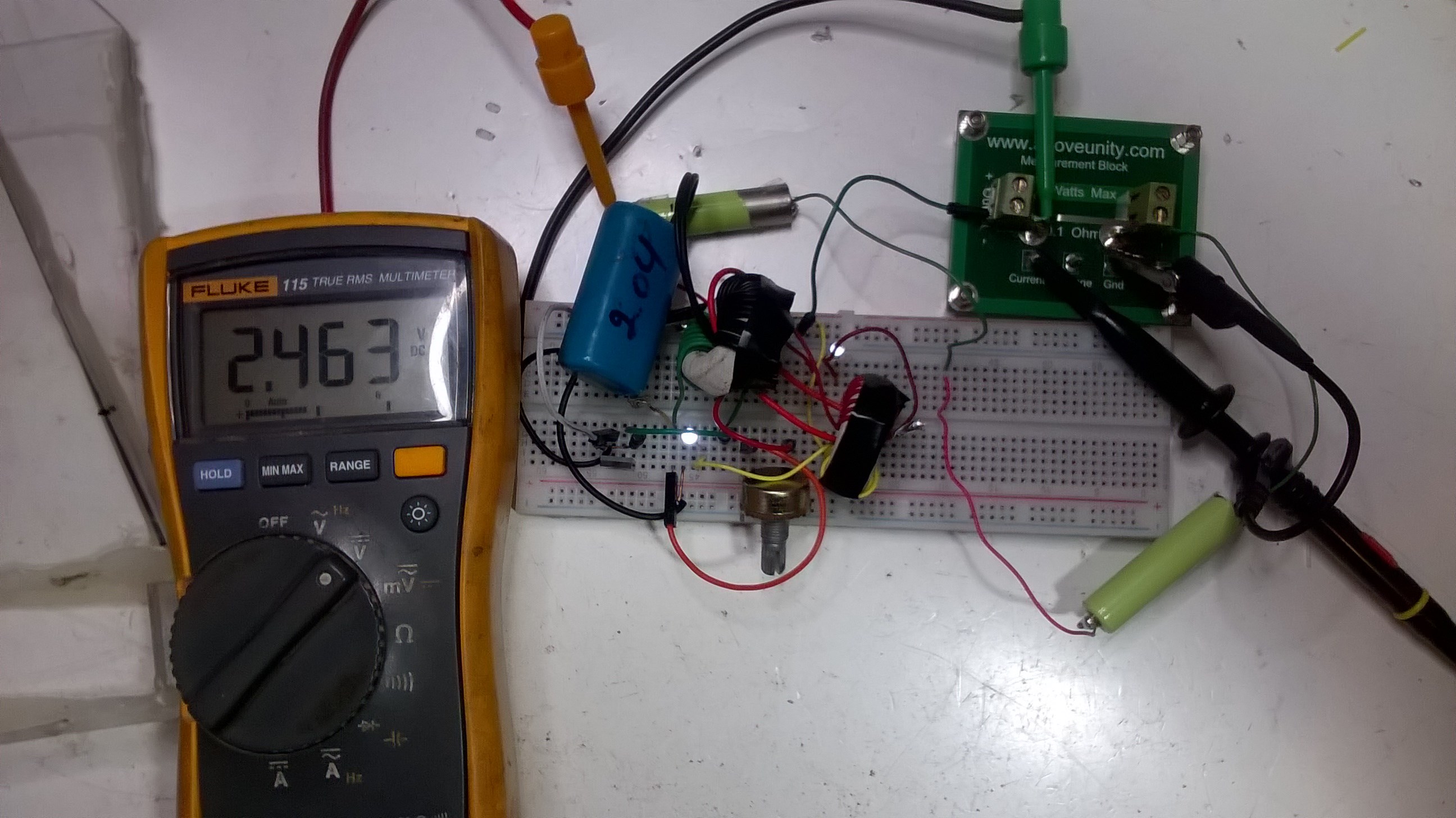
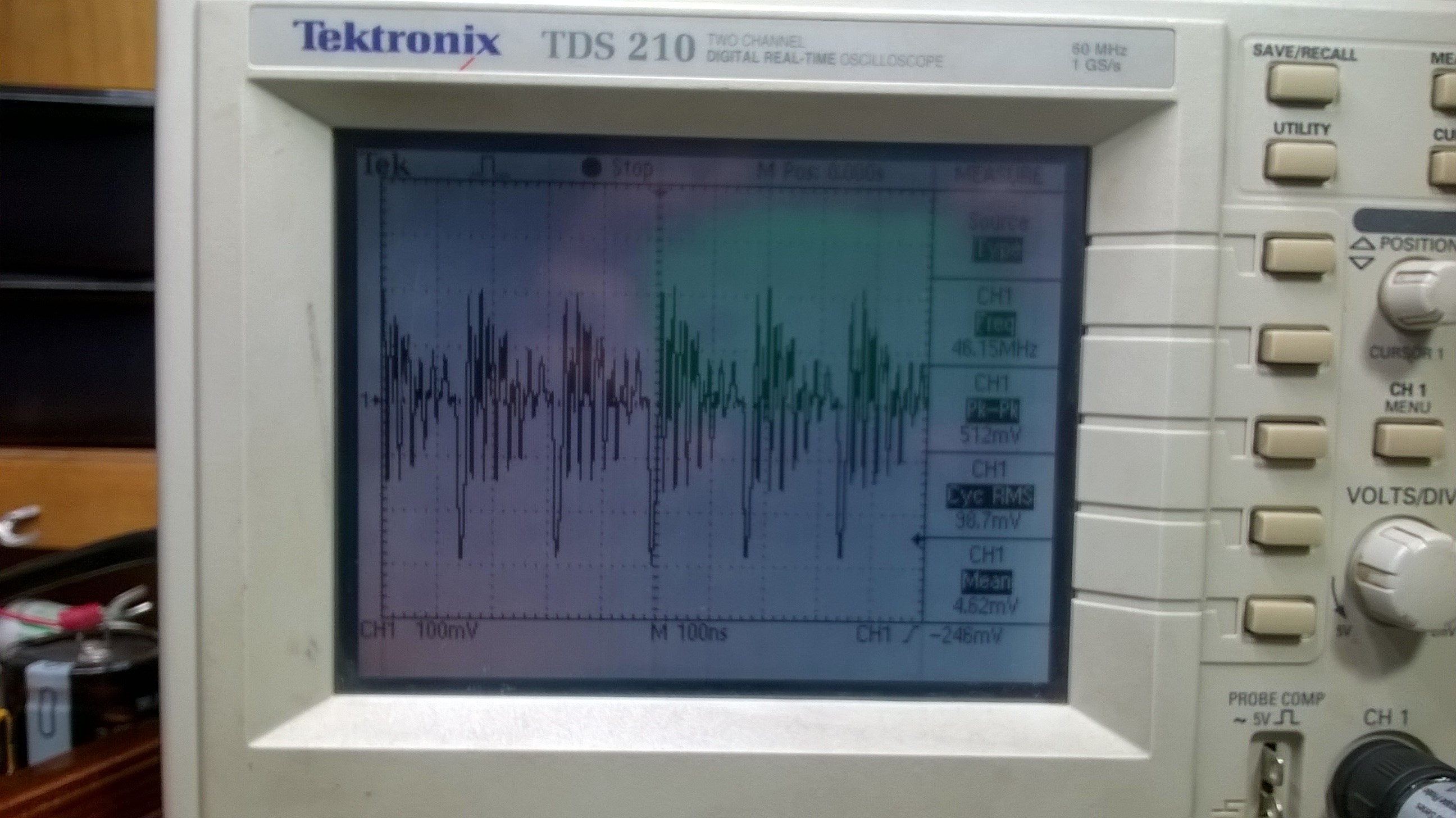

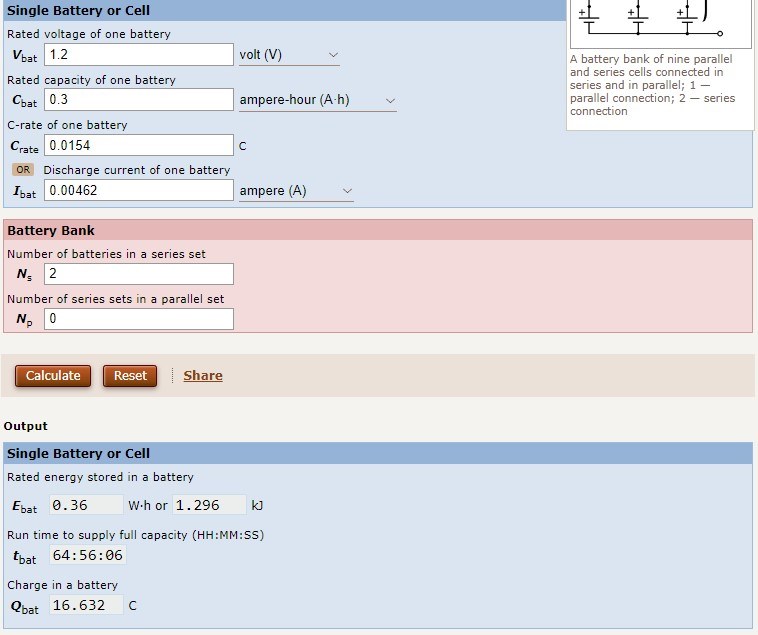
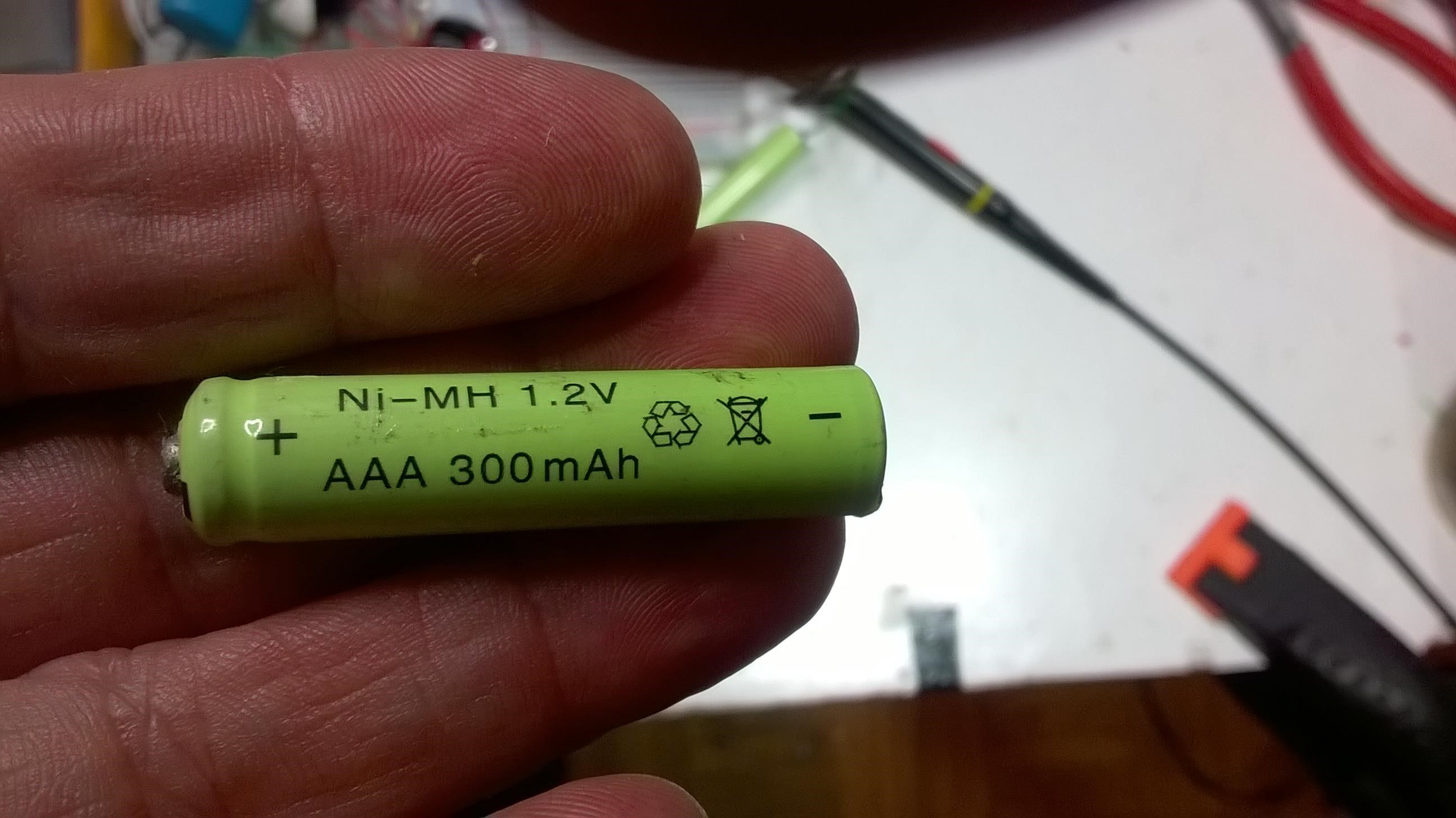


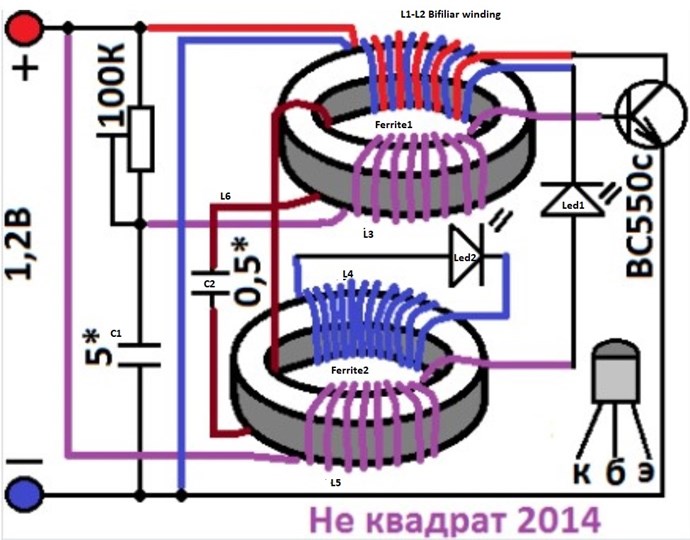
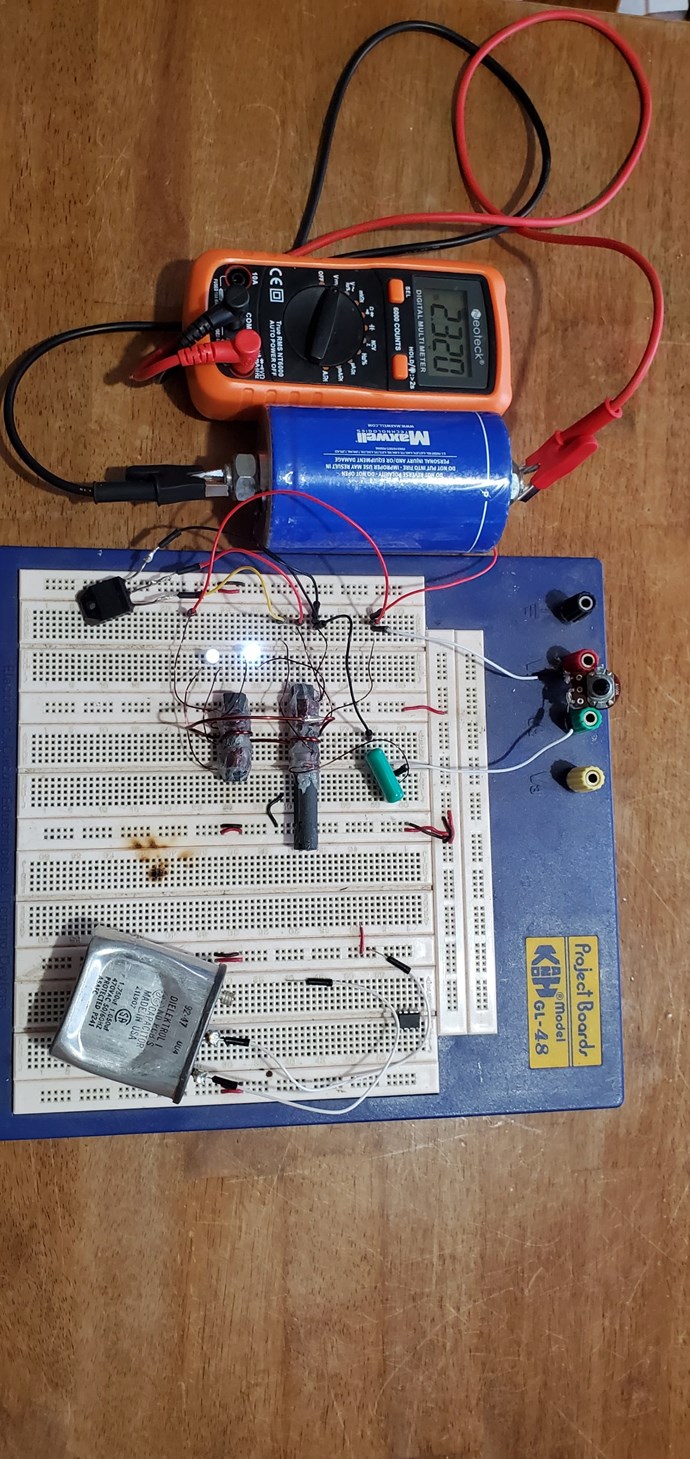

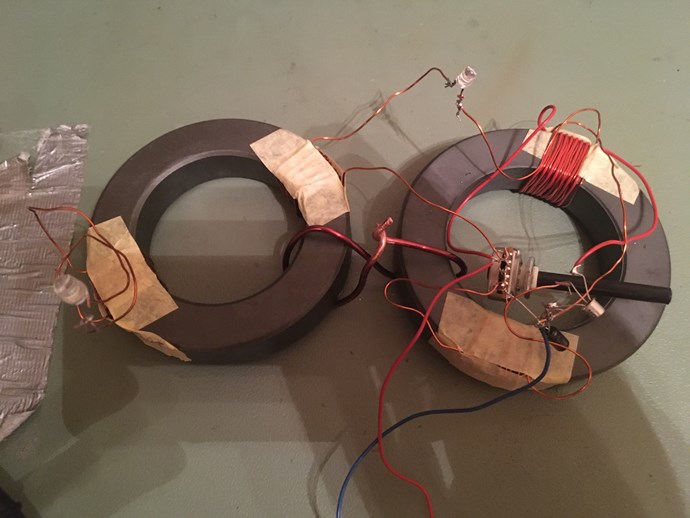
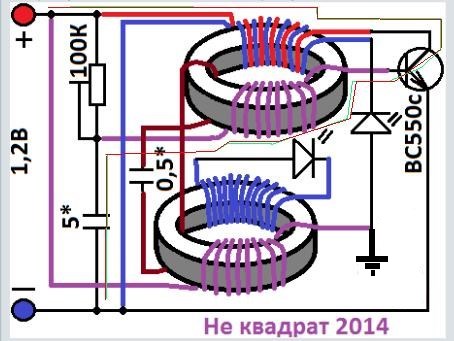




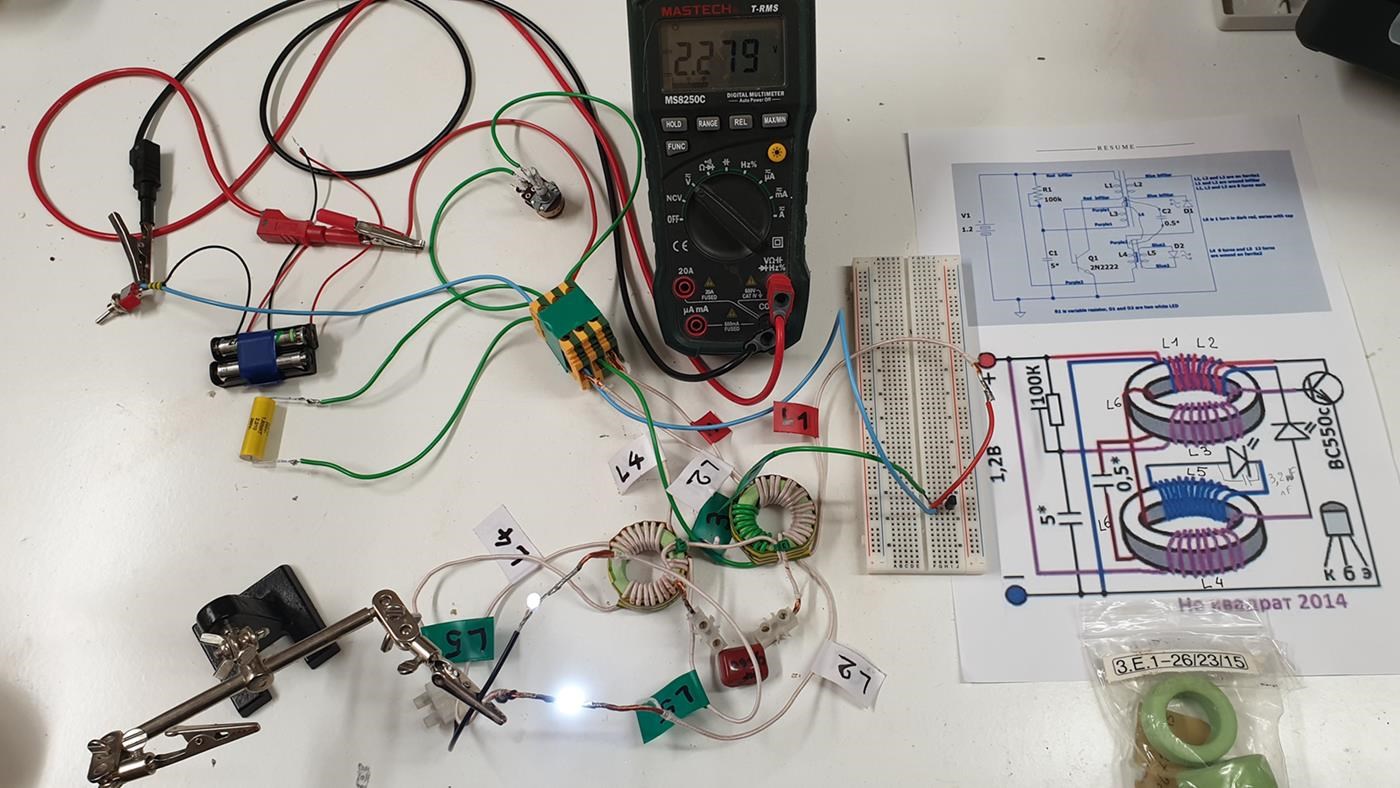
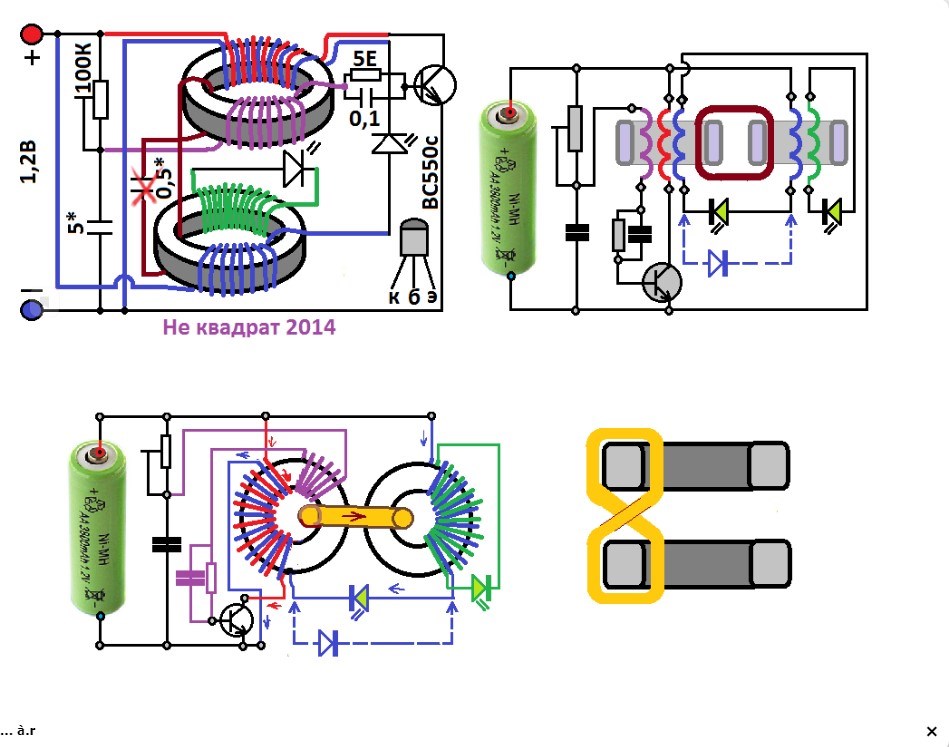


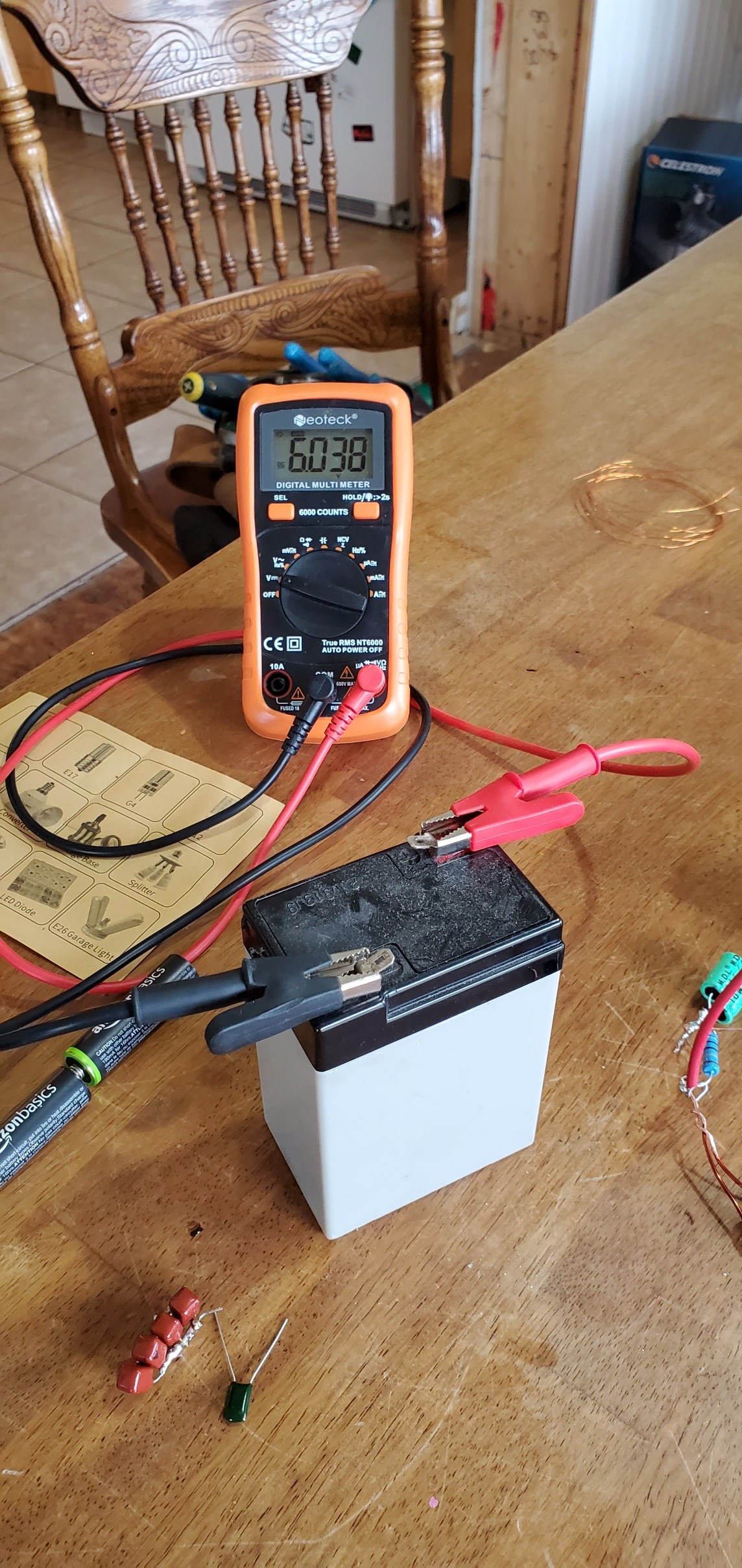
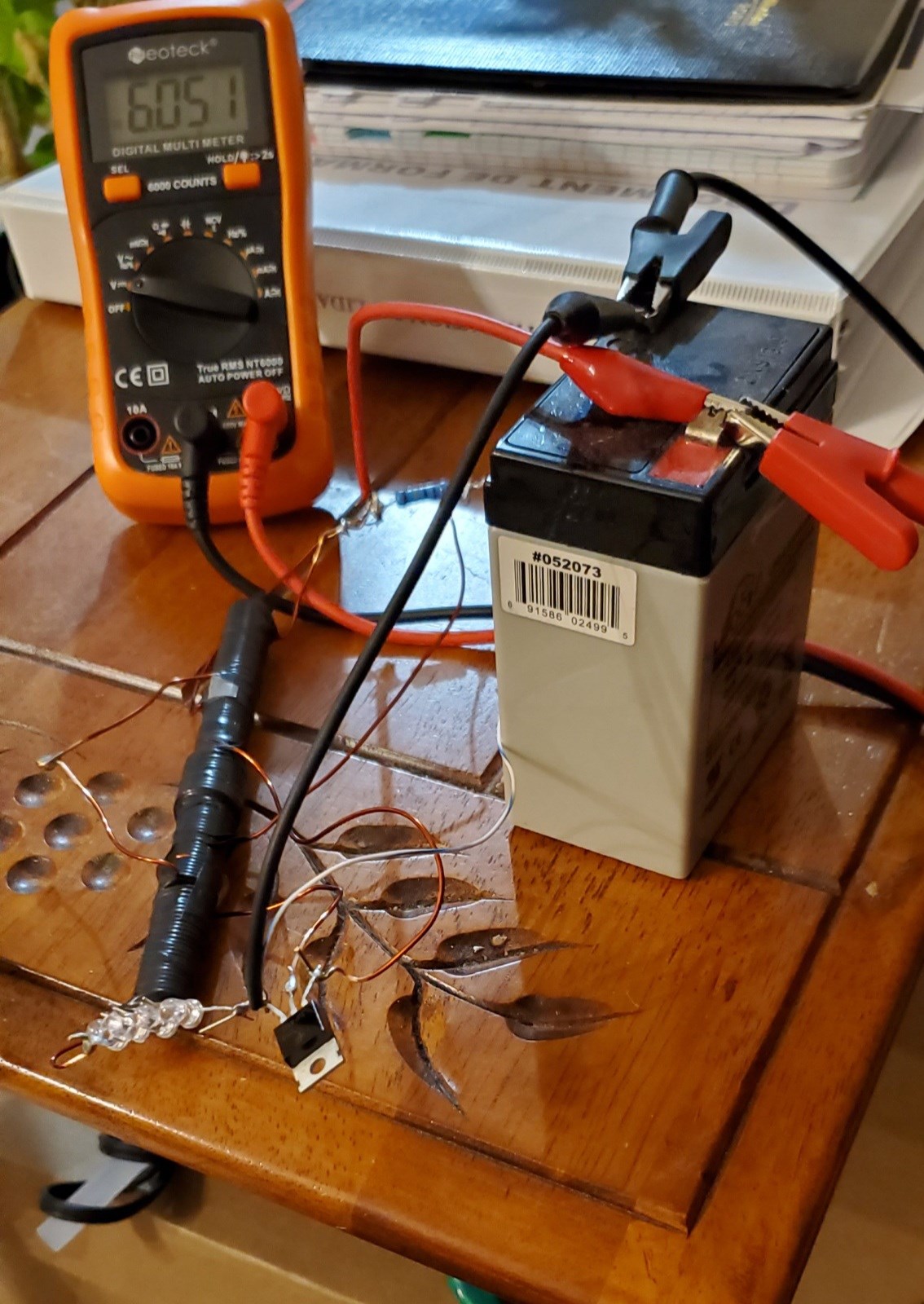 Hi team! Nice work Baerndorfer! I have some little time this weekend to experiment a bit. I try the last circuit sketch by L0stf0x for the super cap. I don't know why... but again I have to reverse the coil on the base of the transistor. It is an interesting way to use POC. I will try this in other experiment to see the effect compared the way I usually connect them. Anyway I have not try on super cap but it works on 6 v lead acid battery! Thanks you and will love to see others experiment!
Hi team! Nice work Baerndorfer! I have some little time this weekend to experiment a bit. I try the last circuit sketch by L0stf0x for the super cap. I don't know why... but again I have to reverse the coil on the base of the transistor. It is an interesting way to use POC. I will try this in other experiment to see the effect compared the way I usually connect them. Anyway I have not try on super cap but it works on 6 v lead acid battery! Thanks you and will love to see others experiment!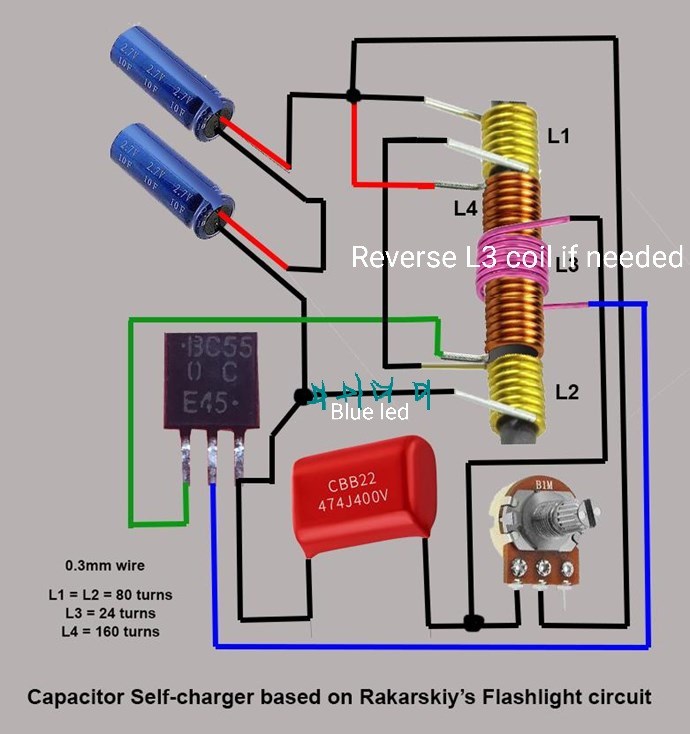

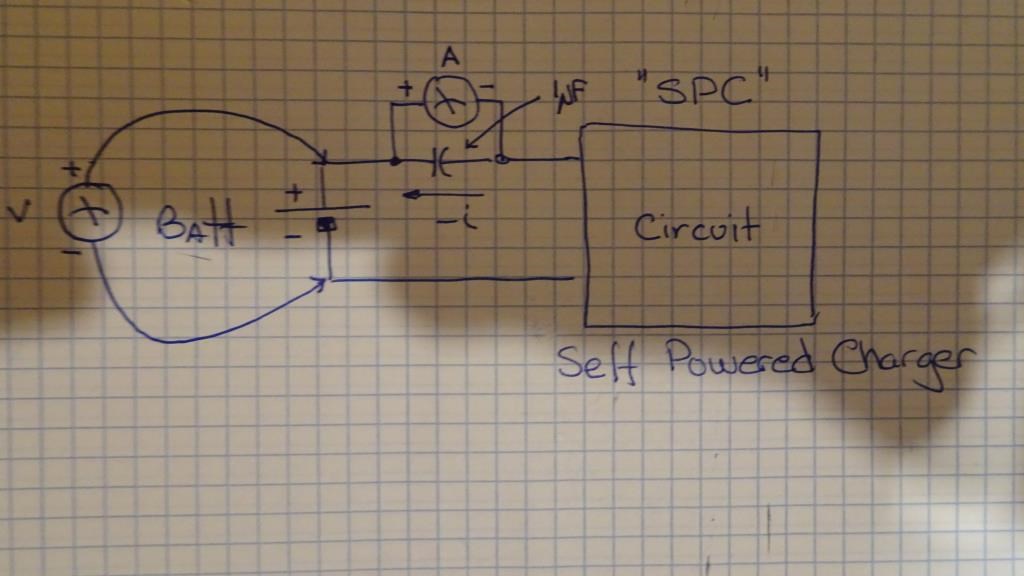
 схема довольно интересна и имеет перспективы к развитию...
схема довольно интересна и имеет перспективы к развитию...